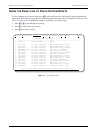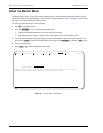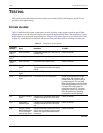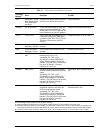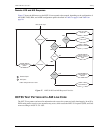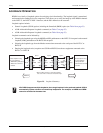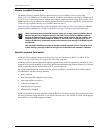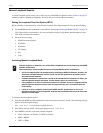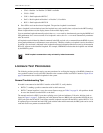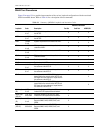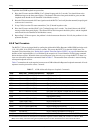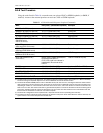
Testing LTPH-UM-1031-03, Issue 3
46 September 12, 2003 H4TU-C-319 List 1
LOOPBACK OPERATION
HDSL4 has a family of loopback options for analyzing circuit functionality. The loopback signal is transmitted
and returned to the sending device for comparison. This allows you to verify the integrity of the HDSL4 channels
to the H4TU-C, the H4TU-C DSX-1 interface, and the DS1 channels to the customer.
Loopback options include:
• Generic Loopback (GNLB) options, including the SmartJack (SMJK) option (see Table 16 on page 51)
• A3LB Addressable Repeater Loopback command (see Table 17 on page 52)
• A5LB Addressable Repeater Loopback command (see Table 18 on page 53)
Loopback commands can be initiated by:
• Selecting the loopback type using the MODE and SEL pushbuttons on the H4TU-C front panel or the manual
loopback (LBK) pushbutton on the H4TU-R front panel
• Selecting the loopback type from the Monitor menu when connected to the craft port of the H4TU-C or
H4TU-R
• Entering the loopback code (exceptions are COLB and RULB) into the test equipment connected to the
H4TU-C or H4TU-R
Figure 28. Loopback Summary
ADC HDSL4 supports multiple loopbacks, but a single loopback is the preferred method. HDSL4
automatically rejects activation of closed loop looopbacks. For example, an NREM and CREM
cannot be activated at the same time.
Network
Customer
Premises
H4TU-C
H4D1
H4D2
H4TU-R
NLOC NDU1 NDU2
NREM
SMJK
TLOS*
CREM CDU1 CDU2 CLOC
Span 1
Span 2
Span 3
DSX-1
* When enabled, TLOS is an automatic loopback
that occurs with an LOS at the remote DS1 input.
Activate loopback using
one of the following:
• MODE/SEL pushbuttons
• Maintenance Terminal
• Test Set
Activate loopback using
one of the following:
• LBK pushbutton
• Maintenance Terminal
• Test Set



